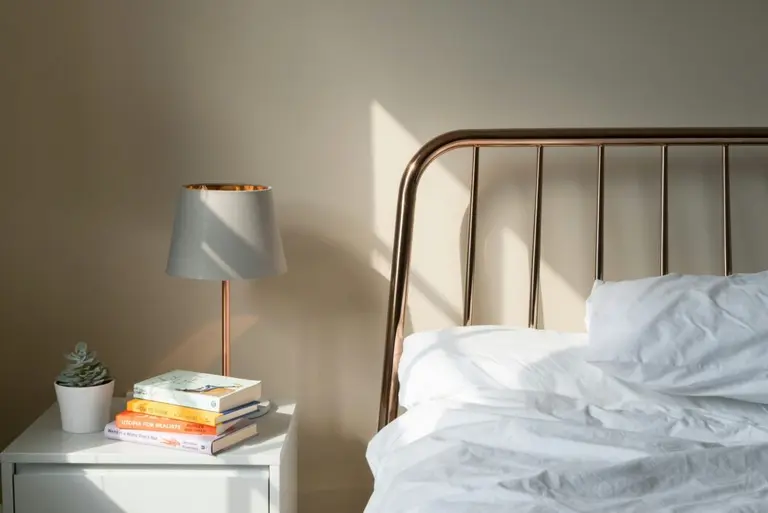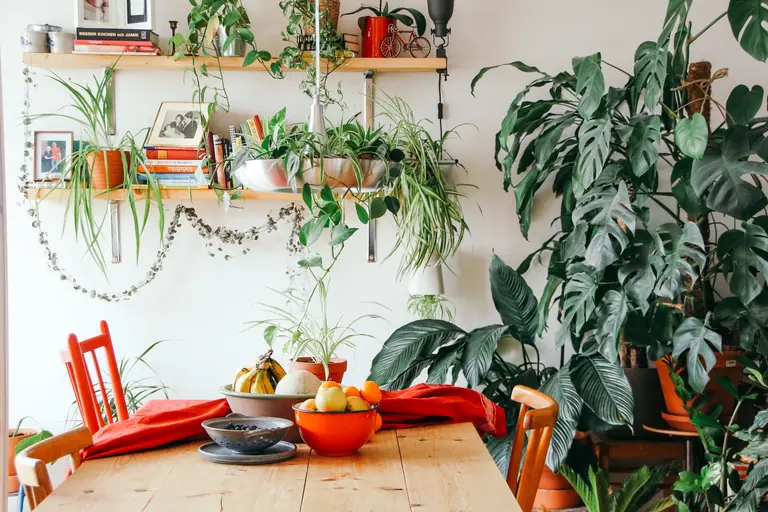How to organize your small NYC apartment, according to the experts
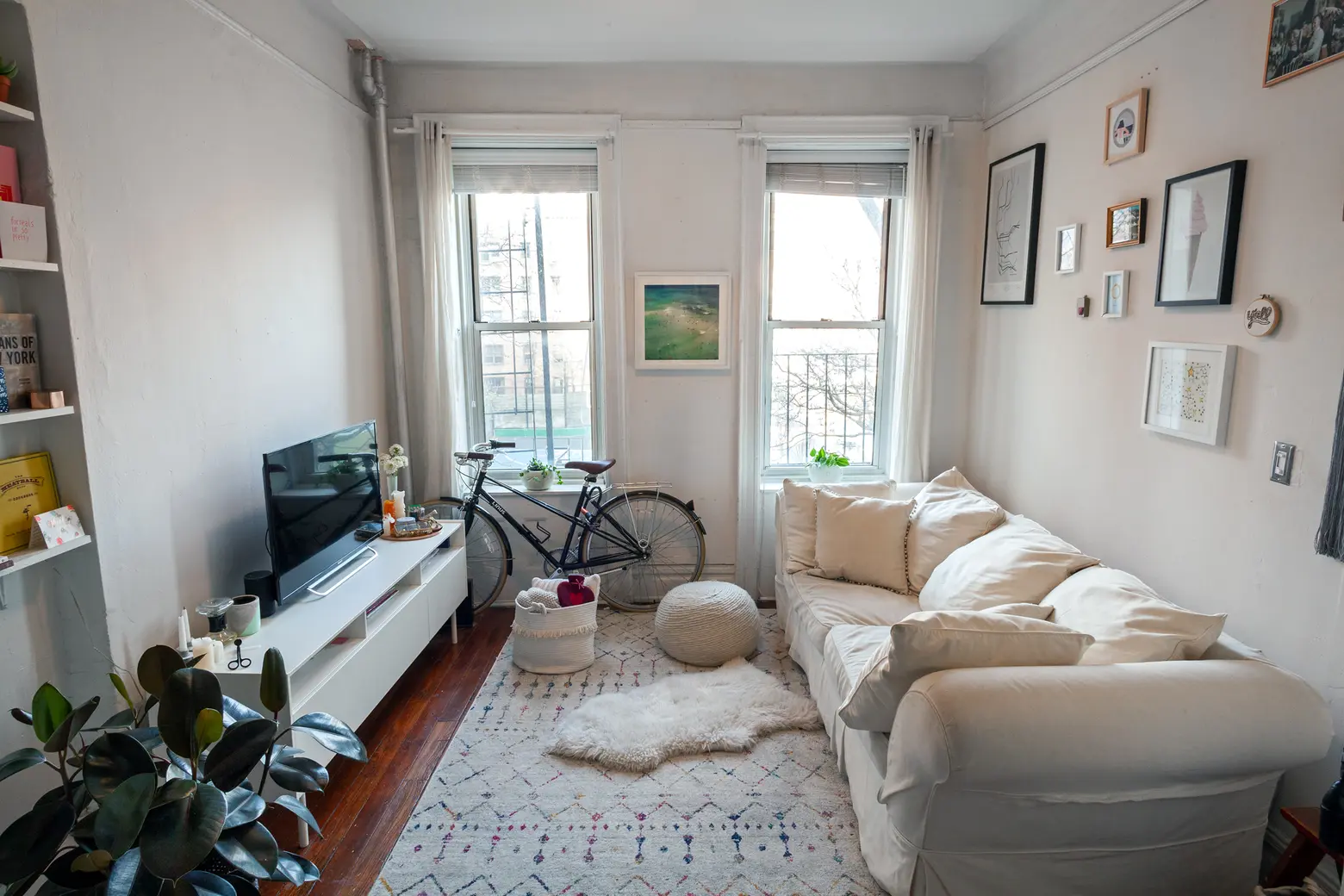
Photo by James and Karla Murray exclusively for 6sqft. See more here.
Living in the Big Apple often means living in a small apartment. Even the grandest townhomes and penthouses tend to be storage-challenged, and this inevitably leads to clutter, disorganization, and even some outside-the-box “hacks.” From turning a stack of suitcases into a nightstand to storing clothes in an oven, New Yorkers have to be creative when it comes to staying organized. We asked professional organizers about the best ways to tackle small spaces, the importance of decluttering, and practical renter-friendly tips.
One of the wackiest solutions Kenika Williams, a professional organizer and founder of Tidied by K, has seen was a stack of old suitcases used as a makeshift nightstand. “The suitcases could detach and inside each was organized with the typical things you’d see on a nightstand — electronics, books, and other miscellaneous items,” she said.
Ashley La Fond, the founder of New York area-based organization company Of Space + Mind, saw a couple build a slat wall in their studio apartment to divide the space, and they mounted the bed to the wall.
“It was a brilliant use of space so it gave them distinct living and sleeping areas, and walls to bump furniture against,” she said. And, as for the classic Carrie Bradshaw method of storing clothes in the oven, Williams says that’s a big “recipe for disaster,” imagining someone forgetting and turning the oven on.
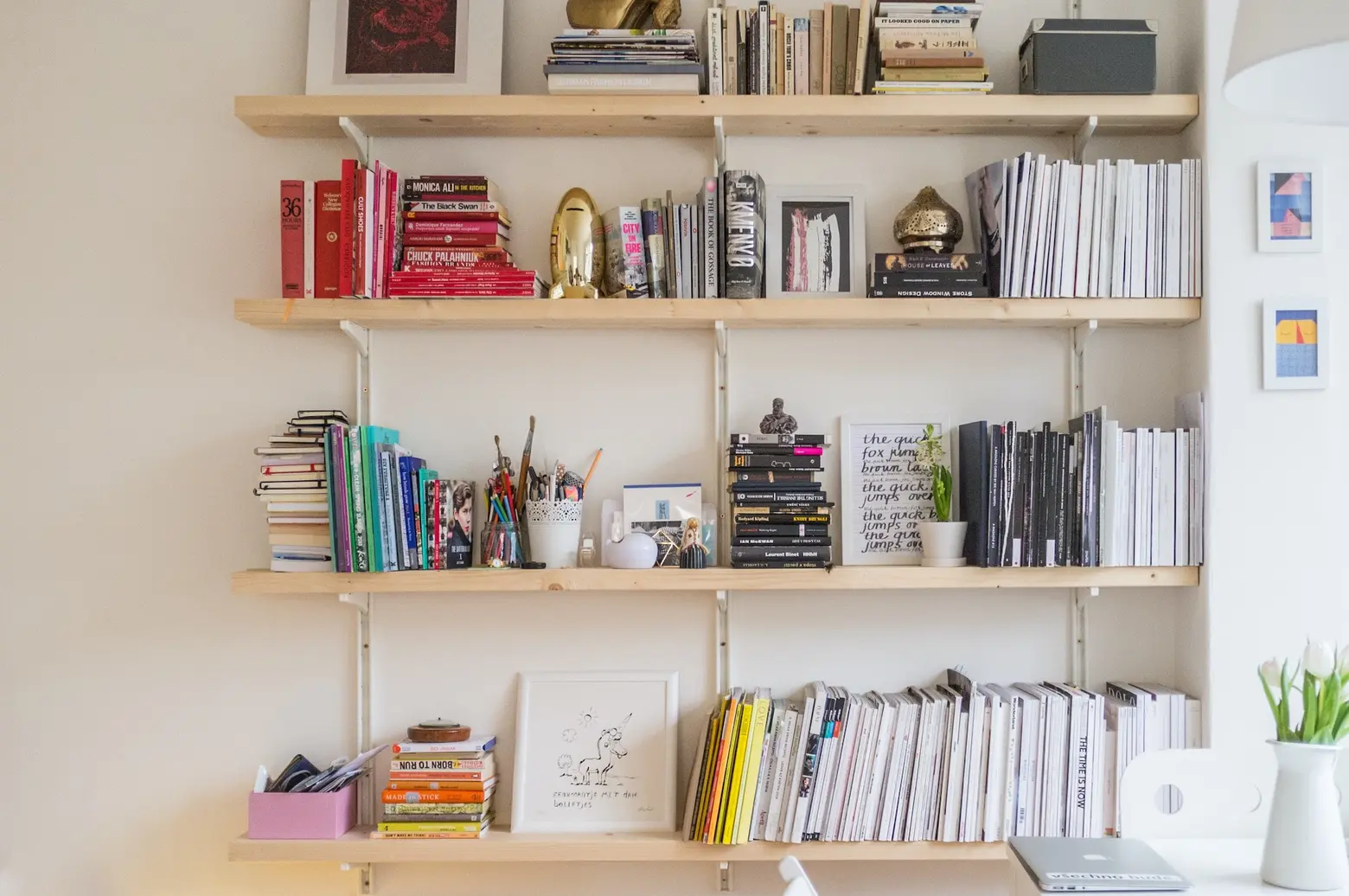
Photo by Vladimir Mokry on Unsplash
Why decluttering is important
La Fond says the main challenge she faces with clients in small NYC apartments is that they don’t want to edit their things to fit their home’s size. “While it’s not our goal as organizers to have people part with their stuff, squeezing too much into a small apartment can have a huge impact on how well you can live in that space,” she said. “We encourage people to keep what serves them now rather than keeping things because they might ‘need’ it one day.”
For Williams, decluttering is a skill to hone. “The more you practice, the better you get at honoring your space and being intentional with what you bring into your home,” she says. “A good rule of thumb is to declutter when spaces in your home get harder to maintain and access.”
“For instance, if you’re always struggling to put shirts back in your drawers, they may be overcrowded. You’d likely be successful at pairing down shirts you haven’t worn in a while.”
As for how often you practice this skill, La Fond suggests quarterly as the seasons change. “This allows you to look at what you didn’t wear or use during a season, and be thoughtful about whether it needs to stay. Chances are if you didn’t wear that coat from three years ago this season, you’re probably not going to reach for it next year either,” she explained.
Williams adds that when you’re dealing with a small space, you could consider leaning on family and friends to lend you things — or act as free storage! “For instance, if you don’t host at your home often, you likely don’t need all the serving ware and dishes. But if you plan to host a Friendsgiving…ask family and friends to borrow, and return when you’re done,” she suggests.
Don’t know anyone who can help? La Fond suggests a low-cost storage locker.
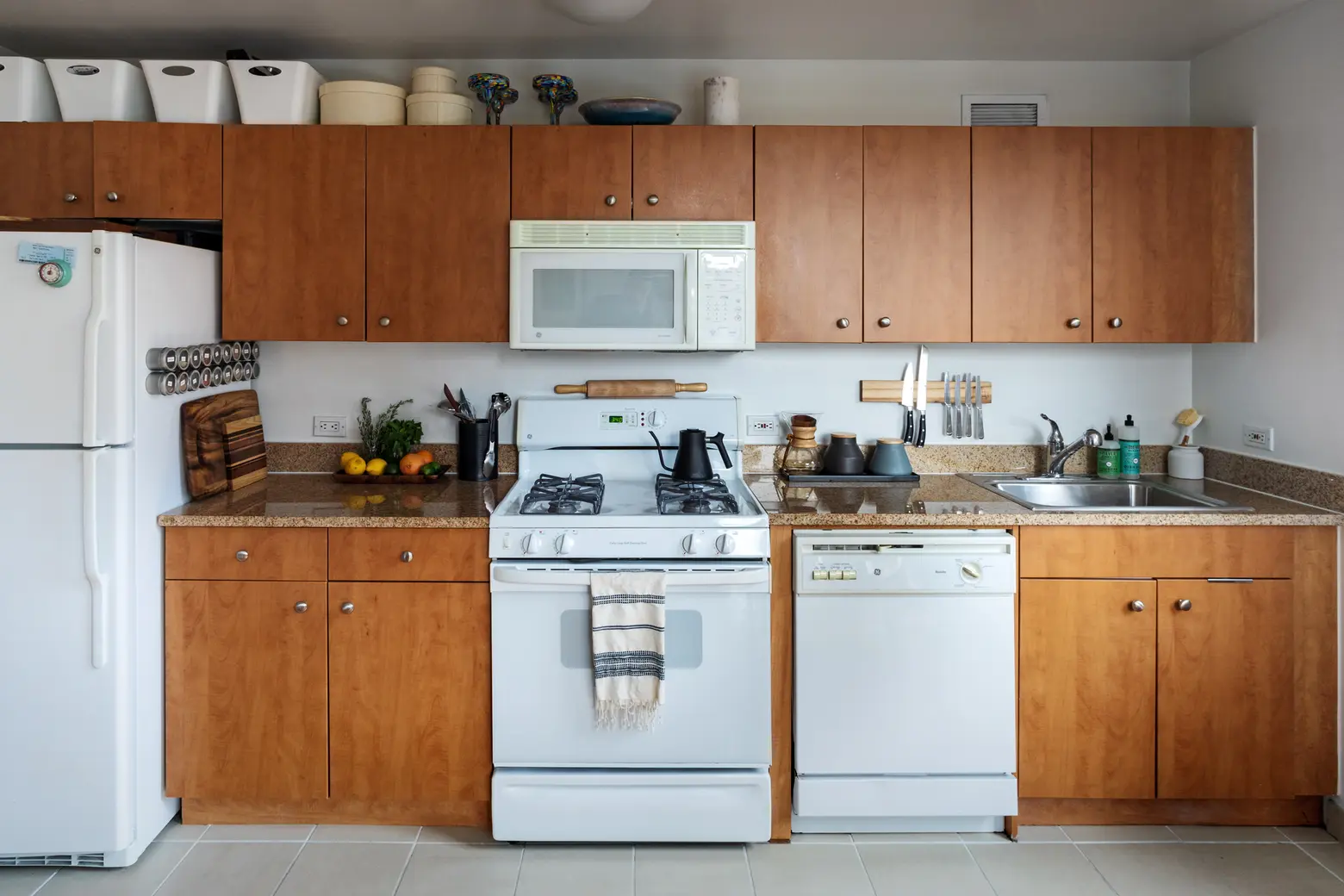
Photo by James and Karla Murray exclusively for 6sqft. See more here.
Top things taking up unnecessary space
If you don’t know how or where to start your donation pile, here are the top items these two organizers find taking up unnecessary space in people’s homes:
- Excessive dishware (plates, cups, and mugs) and pots and pans
- Water bottles
- Old clothes that no longer fit or are damaged
- Mismatched Tupperware
- Old baby equipment (cribs, changing tables, highchairs, strollers, car seats)
- Product boxes (shoe boxes,iPhone boxes, etc.)
- Free product samples (face creams)
- Plastic cutlery from takeout places
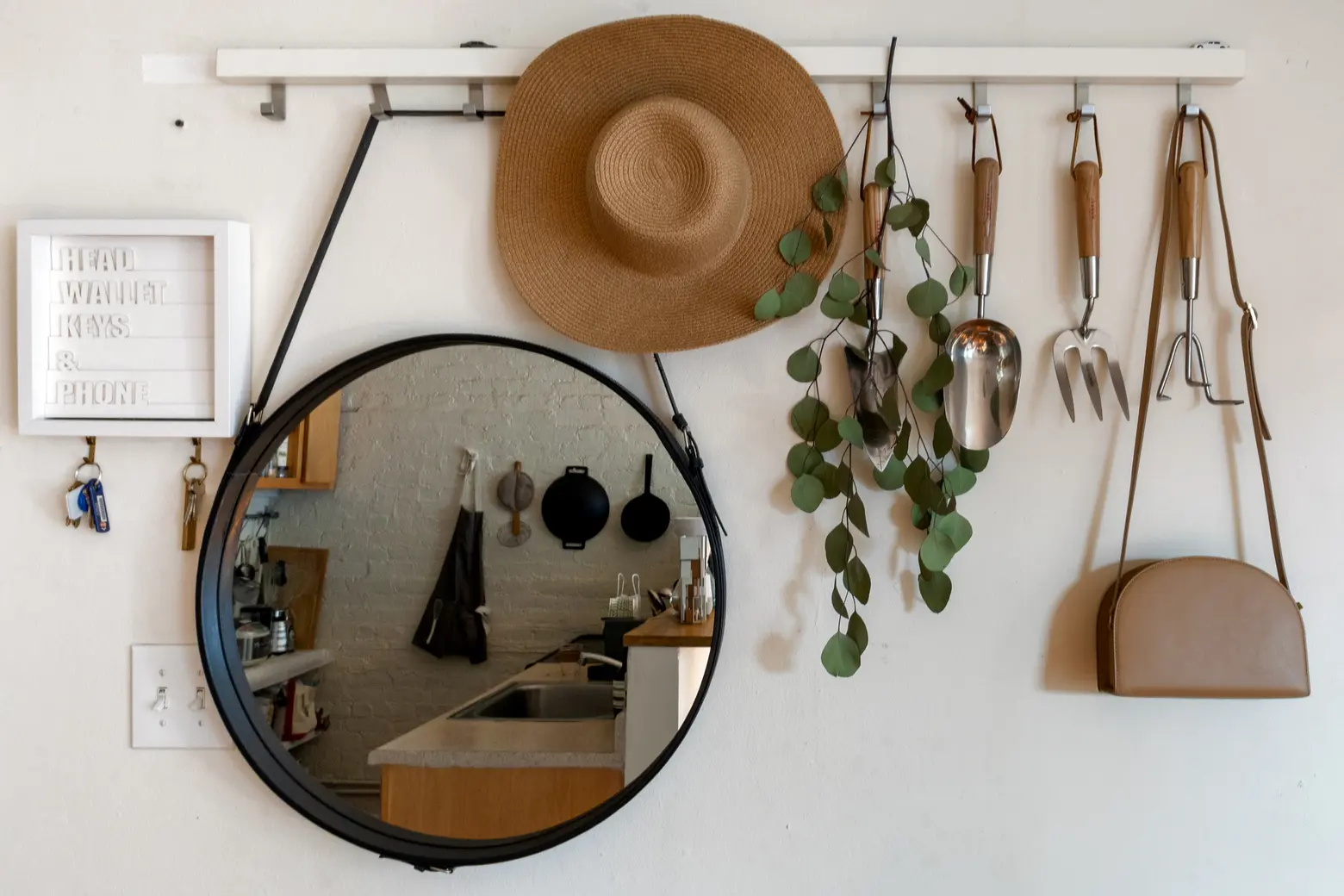
Photo by James and Karla Murray exclusively for 6sqft. See more here.
Working with minimal storage
Once you’ve decluttered and decided what to eliminate from your home, it’s time to organize what’s left. And for New Yorkers, this can be a challenge because most apartments have limited storage space and some don’t even have bedroom closets! To combat this architectural dilemma, La Fond says, “If your apartment doesn’t have closets, create one!”
She recommends purchasing modular closets like the Elfa System from the Container Store or the Ikea Pax system. The first one is installed onto a wall and the second is freestanding, which would be the better choice for renters. She advises adding lots of shelves and hooks and considering mirrored doors to make the space look larger.
Both organizers share that multipurpose furniture — like a bedframe with drawers for clothes and linens or an ottoman that opens up and can store wires and electronics — is key in a small space. Vacuum-sealing bags are also a great investment as you can store seasonal clothes or bulky items like pillows and comforters and just suck them down to a thin little package that can go under the bed.
Also, look up — as in at your vertical space. “No door should be left untouched when you’re low on space,” says Williams touting over-the-door racks. Tall shelving units or floating shelves mounted on walls are great ways to utilize vertical space, and if you paint them the same color as the walls, they won’t look too overwhelming in a cramped space.
Renter-friendly organizational hacks
And speaking of renting, it can feel a little limiting in terms of what you can do with your space. But just because you may not be able to blow out a wall to make a pantry or install built-in shelves, doesn’t mean you can’t create storage solutions.
Williams leans on free-standing shelving systems and wall hooks — in particular command hooks, which she says are the “absolute best” because they won’t damage the walls. La Fond likes the aforementioned IKEA Pax system because it’s fully freestanding and can be broken down and rebuilt as you move. Plus it’s totally customizable.
If your rental does not have a medicine cabinet, don’t be afraid to put one up to save counter space in the bathroom — you can find ones that do not need to be fully installed onto a wall.
RELATED:
